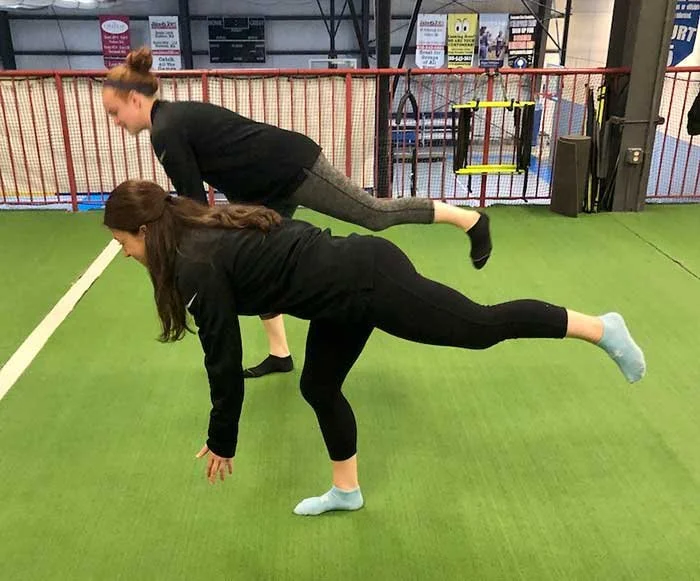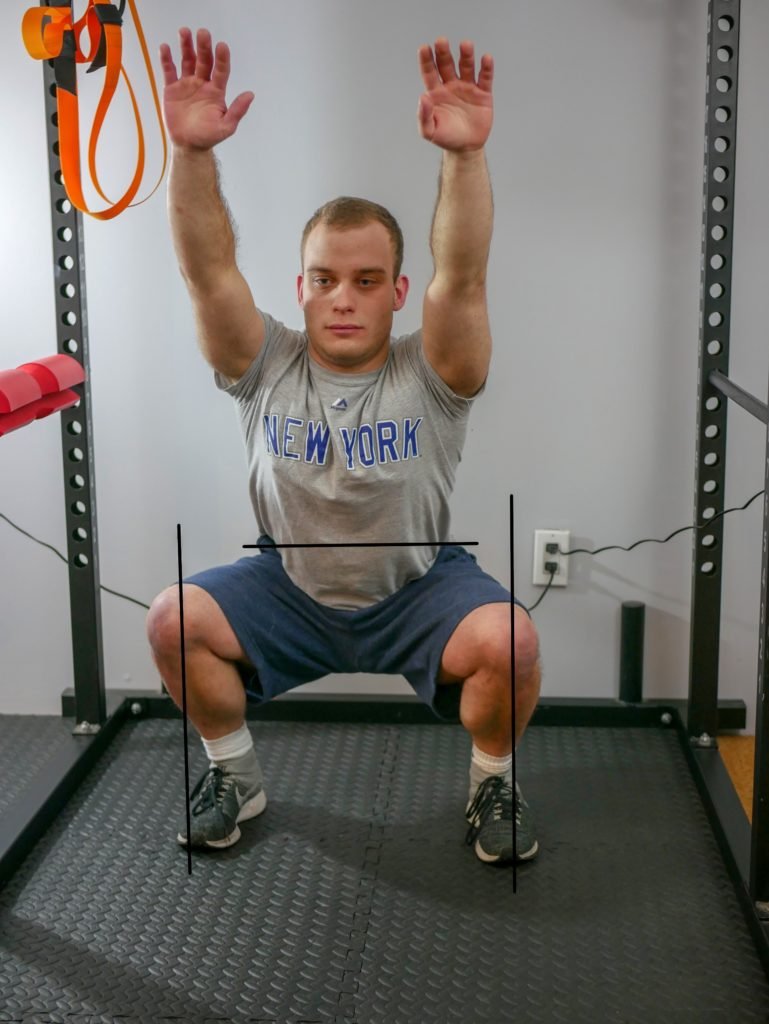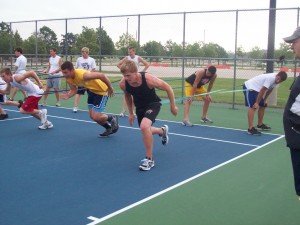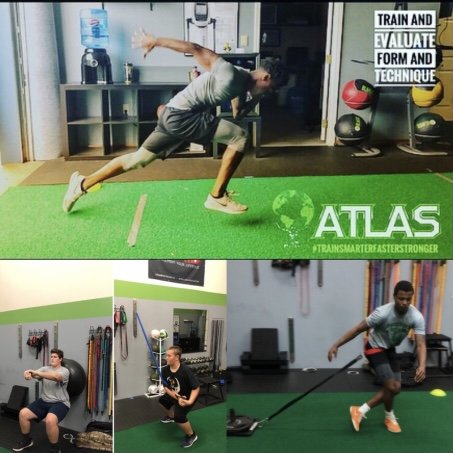
Progressive Overload: The Secret to Building Strength and Avoiding Plateaus
Progressive overload is the foundation of building strength and muscle. It’s the principle of gradually increasing the intensity of your workouts to continually challenge your muscles and stimulate growth.
How Progressive Overload Works:
Increasing Weight: One of the most straightforward ways to apply progressive overload is by increasing the weight you lift over time. Even small increases, like 2.5 to 5 pounds, can make a big difference.
Increasing Reps or Sets: If you can’t increase weight, try increasing the number of reps or sets for each exercise. This will continue to challenge your muscles…..

GLP-1 Medications and Weight Loss: How They Work and What to Expect
GLP-1 medications, originally developed to manage type 2 diabetes, have recently gained popularity for their effectiveness in promoting weight loss. These medications work by mimicking the action of the hormone glucagon-like peptide-1, which helps regulate blood sugar levels and appetite.
How They Work:
GLP-1 medications slow down gastric emptying, making you feel fuller for longer. They also reduce the release of the hunger hormone, ghrelin, leading to decreased appetite. By enhancing insulin secretion and inhibiting glucagon release, they help maintain balanced blood sugar levels. This combination of effects can significantly reduce calorie intake and promote steady, gradual weight loss.

The Science of Lean Muscle Growth: Key Factors for Strength and Definition
Building lean muscle is more than just lifting heavy weights; it's about understanding the science behind muscle growth. Here's how it works:
Key Factors for Lean Muscle Growth:
Muscle Fiber Activation: To grow lean muscle, you need to activate both slow-twitch (endurance) and fast-twitch (strength) muscle fibers. Engaging in a combination of strength and endurance training can ensure both types of muscle fibers are worked.
Muscle Tension: Strength training generates tension in the muscle fibers. The greater the tension, the more stimulus for muscle growth…..

Effective Progress Tracking for Golf Fitness
Golfers, how do you know if your fitness routine is making a difference in your game? Tracking your progress is essential for continuous improvement. In this blog post, we'll explore how golfers can effectively measure and track their progress in their fitness journey. Without proper progress tracking, golfers may not realize whether their fitness routine is working or if adjustments are needed. This lack of feedback can hinder improvement and motivation.

Soaring to New Heights: Enhancing Vertical Speed and Jumping Abilities in Basketball and Volleyball
In the world of sports like basketball and volleyball, where vertical speed and jumping abilities can mean the difference between victory and defeat, Atlas Performance Training is committed to helping athletes reach new heights—quite literally. In this blog post, we'll explore the vital importance of vertical speed and jumping abilities in these sports. We'll detail training methods and coaching techniques that empower athletes to improve their vertical jump and explosive power, with a special emphasis on the role of neuromuscular adaptation training in achieving higher vertical leaps.

GAMEREADY podcast- New…. Gym Talks
In this episode I talk about the importance of staying consistent and following your own path. This is one on my best episodes yet! Please subscribe and enjoy the conversation.

Dynamic Stretching for Sport-Specific Flexibility
At Atlas Performance Training, we recognize that the journey to athletic excellence begins with a strong foundation, and one crucial element of this foundation is dynamic stretching. In this blog post, we'll define dynamic stretching and its benefits for young athletes, explore sport-specific dynamic stretching routines tailored to basketball, football, soccer, volleyball, rowing, and baseball, and offer valuable tips on seamlessly incorporating dynamic stretching into daily training sessions.

Movement Screening for Athlete Assessments: Building the Foundation for Success
In the world of youth athletic development, one of the fundamental tools in an athlete's journey towards success is movement screening. This process is not just about ensuring proper form during exercises; it's about laying a strong foundation for an athlete's overall growth and performance. In this blog post, we will delve into the significance of movement screening for youth athletes, explore the key areas assessed during the screen, and share two inspiring real-life case studies where athletes have reaped the benefits of this vital practice.

What is a swing and movement assessment, and how can it benefit golfers?
As a golfer, improving your swing and movement is crucial for enhancing your performance on the course. One of the most effective ways to achieve this is through a swing and movement assessment. But what exactly is it, and how can it benefit you as a golfer?

Evaluating Movement Patterns for Injury Prevention: Keeping Young Athletes Safe
In the world of youth athletic development, safety is paramount. While striving for peak performance is a common goal, ensuring the well-being of young athletes is equally crucial. One essential component of this equation is the evaluation of movement patterns. In this blog post, we will delve into the pivotal role of movement pattern evaluation in preventing injuries among youth athletes. We will also explore common movement pattern issues, and share two real-life case studies, Athlete A1 and Athlete A2, to illustrate the effectiveness of injury prevention measures.
The Role of Movement Pattern E

How can golfers identify swing flaws? Through self-assessment or with the help of a professional?
Improving your golf swing begins with identifying and addressing swing flaws. Whether you're a seasoned pro or just starting, understanding how to spot these flaws is crucial for your development as a golfer. In this blog post, we'll explore how you can identify swing flaws through self-assessment or with the assistance of a professional.

How often should I squat each week to gain leg strength? Is it bad for my back?
Squatting is a fantastic exercise for building leg strength, but many individuals are unsure of how often they should squat and whether it's detrimental to their back health. Inadequate squat frequency can slow down your progress, while excessive squatting without proper form can lead to back issues and injuries….
The Role of Technology in Strength Assessment: Unveiling Athletes' Potential
In the ever-evolving world of youth athletic development, staying ahead of the curve is crucial. One of the game-changers in this quest for excellence is the integration of technology into strength assessments. This blog post explores the pivotal role of technology in modern strength assessments for youth athletes. We will delve into the invaluable data and insights that technology can provide, how it aids in designing highly individualized training programs, and discuss the remarkable results achieved through technology-driven assessments.

Why is Mobility Important for Golfers, Especially Weekend Warriors
As a weekend warrior hitting the golf course, you might think that improving your swing technique and accuracy are the keys to a better game. While these aspects are crucial, there's another fundamental factor that often goes overlooked – mobility. In this blog post, we'll delve into why mobility is essential for golfers, including weekend warriors. Mobility refers to the ability to move your joints freely through their full range of motion. For golfers, this is paramount for several reasons:

"The Best Plan to Restart Your Gym Journey: Shedding Fat Without Bulking Up
Achieving your goal of losing fat without bulking up requires a well-structured training schedule that combines resistance training and cardiovascular workouts, complemented by a balanced diet. In this 3-month training schedule, we'll outline a daily routine that alternates between resistance training and cardio to optimize your results. Additionally, we'll provide guidance on the best time for cardiovascular training, workout duration, nutrient-dense nutrition suggestions, and meal timing to support your fitness goals.

Powering Through: Energy System Development for Peak Stamina in Field Sports and Court Play
In the arena of sports, endurance is the unsung hero that fuels athletes through grueling matches and competitions. Whether it's the endless sprints of soccer, the relentless running of basketball, or the ceaseless pursuits of field sports, stamina is the key to success. At Atlas Performance Training, we understand the significance of cardiovascular endurance in these sports. In this blog post, we'll stress its importance, provide specific training methods and coaching principles for improving energy system development, and discuss how sport-specific endurance training can elevate an athlete's stamina and energy systems.

How Swing Analysis and Movement Assessments Improve Golfer's Long-Term Health and Performance
Golf is not just a game; it's a passion that often lasts a lifetime. However, the pursuit of golf excellence can take a toll on your body, particularly your lower back and shoulders. In this blog post, we'll explore how swing analysis and movement assessments can lead to significant improvements in a golfer's long-term health and performance, focusing on playing pain-free and consistently driving the ball longer distances.

Stretching Every Day: The Benefits and Its Place in Your Fitness Routine
Have you ever wondered about the role of stretching in your health and performance training program? The answer may surprise you. Stretching, particularly dynamic stretching, can be a game-changer in enhancing your overall fitness journey. In this blog post, we'll explore how dynamic stretching can improve the results of your training program, when to incorporate it, and how both dynamic and static stretching contribute to long-term flexibility and mobility.

Neuromuscular Mastery: The Key to Youth Athletic Development
In the pursuit of athletic excellence, youth athletes face a unique challenge: harnessing the power of neuromuscular adaptation. At Atlas Performance Training, we recognize that this neurological phenomenon is the cornerstone of athletic development. In this blog post, we'll explore the vital importance of neuromuscular adaptation in young athletes, the training methods and principles that drive this process, and the life-changing outcomes it brings to those who embrace it, as well as the potential negative consequences for those who neglect it.

How often should golfers undergo swing assessments to track their progress?
Regularly assessing your golf swing is essential for tracking progress and maintaining peak performance. But how often should golfers undergo swing assessments? In this blog post, we'll explore the ideal frequency for swing assessments and why it matters. When embarking on your journey to improve your golf swing, it's crucial to start with an initial assessment. This comprehensive evaluation establishes a baseline for your swing mechanics, strengths, and weaknesses. It's recommended to undergo an initial assessment when beginning a golf improvement program.
